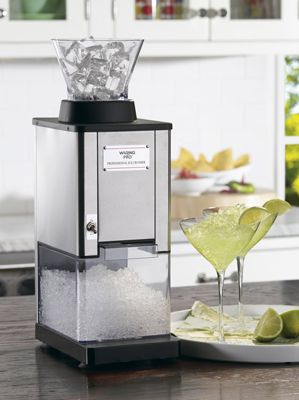In both home and office environments, the hum and clatter of appliances can quickly become a distraction. While an ice machine offers undeniable convenience, its noise output is a significant factor, especially in quiet workspaces, open-plan offices, or residential settings where peace is valued. Traditional ice makers, with their whirring compressors and ice-dropping sounds, can disrupt concentration or relaxation. Fortunately, advancements in appliance technology have led to a new generation of quiet ice machines designed to provide a steady supply of ice without disturbing the peace. This article explores the features that contribute to quiet operation and highlights what to look for when choosing an ice machine for noise-sensitive environments.
Why Quiet Operation Matters
The impact of noise from appliances can be more significant than often perceived:
- In the Office: Constant noise can reduce productivity, increase stress, and make it difficult to focus on tasks or hold conversations. A quiet ice machine ensures a more conducive work environment.
- At Home: Loud appliances can disrupt sleep, conversations, or quiet activities like reading or watching TV. For open-concept living spaces, a noisy ice maker can be particularly intrusive.
- User Comfort: Less noise translates to a more pleasant user experience, reducing auditory fatigue and the need for constant background music or other noise-masking techniques.
Noise levels are typically measured in decibels (dB). For comparison, a whisper is around 30 dB, a normal conversation is 60 dB, and a loud vacuum cleaner can be 70-75 dB. Many quiet ice machines aim to operate in the 40-60 dB range, making them blend more seamlessly into the background.
Key Features for Quiet Performance
When selecting an ice machine for a noise-sensitive environment, prioritize these features:
- Compressor Technology: The compressor is often the primary source of noise. Look for machines with:
- High-Quality, Efficient Compressors: Modern, well-engineered compressors run more smoothly and quietly.
- Insulated Compressor Housing: Good insulation around the compressor can significantly dampen operational noise.
- Cooling System:
- Water-Cooled vs. Air-Cooled: While most home/office models are air-cooled, water-cooled commercial units (less common for home/office) tend to be quieter as they don’t rely on a fan to dissipate heat into the room. For air-cooled units, ensure sufficient clearance for proper airflow, as restricted airflow can make the fan work harder and louder.
- Quiet Fans: Look for models that specifically mention low-noise fans or optimized airflow designs.
- Ice Drop Mechanism: The sound of ice dropping into the bin can be surprisingly loud.
- Soft-Drop Systems: Some machines have mechanisms that gently release ice into the bin, reducing the clatter.
- Insulated Ice Bins: A well-insulated bin can help muffle the sound of ice falling and settling.
- Construction Materials and Design:
- Durable, Dampening Materials: Machines built with high-quality, dense materials (e.g., thicker plastic, stainless steel panels) can absorb more vibration and sound.
- Solid Construction: A sturdy, well-assembled machine with minimal rattling parts will naturally be quieter.
- Smart Sensors and Optimized Cycles: Machines with intelligent sensors that accurately detect ice levels and water needs can prevent unnecessary operation or excessive ice production, thus reducing overall noise.
- User Reviews: Always check user reviews for specific feedback on noise levels. Manufacturers may list decibel ratings, but real-world user experiences can provide valuable insights.
Top Considerations for Office and Home Use
- Countertop Models: Many compact countertop ice makers are designed with quiet operation in mind, making them suitable for small offices, breakrooms, or home kitchens. Brands like GE Profile Opal (for nugget ice) and some Euhomy or GoveeLife models are often cited for their relatively quiet performance.
- Undercounter/Built-In Models: For a more permanent solution in a home kitchen or larger office breakroom, undercounter units can be good. While they still produce noise, being enclosed within cabinetry can help dampen sound. Look for models with good insulation and quiet components.
Conclusion
Choosing a quiet ice machine for your office or home is an investment in comfort and productivity. By focusing on models with efficient, insulated compressors, optimized cooling systems, and thoughtful ice drop mechanisms, you can enjoy the convenience of on-demand ice without the disruptive noise. Prioritize reading user reviews and checking manufacturer specifications to ensure your chosen machine delivers the peaceful operation you desire.

